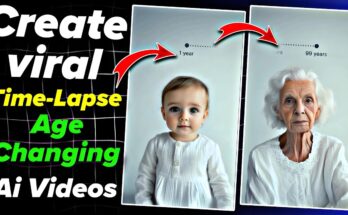In recent years, artificial intelligence (AI) has made enormous strides in various fields, ranging from healthcare and education to entertainment and digital art. One of the most innovative and controversial uses of AI today is in the realm of media manipulation, particularly in creating realistic video and images. As a result, we are seeing AI being used to generate content that would have once been unimaginable. One such fascinating yet contentious application is the ability to make any celebrity appear to be smoking, using AI-driven tools.
This post will explore the concept of creating realistic AI-generated images and videos of celebrities smoking, how this technology works, the ethical considerations behind it, and how you can use AI tools to create such content yourself. Let’s dive in and unpack the possibilities, as well as the potential dangers of this emerging trend.
Understanding AI in Digital Manipulation
Artificial intelligence has revolutionized content creation, and AI-generated media is now commonplace in social media, film, advertising, and more. AI technologies, such as deep learning and neural networks, enable computers to understand, generate, and manipulate images and videos with incredible precision.
Deepfake technology is one of the most notable applications of AI in the realm of digital manipulation. Deepfake videos use AI to superimpose one person’s face or likeness onto another’s, creating convincing simulations that can be incredibly difficult to distinguish from reality. As the technology has improved, it has expanded into various domains, including creating convincing audio, video, and images of individuals doing or saying things they never did. This leads us to the topic at hand: making any celebrity appear to be smoking with AI.
How AI Makes It Possible to Show Celebrities Smoking
To understand how this works, it’s essential to look at the technical aspects of AI and deepfake technology, which can generate or manipulate realistic visual content.
1. AI-Powered Image and Video Synthesis
One of the key technologies behind creating lifelike images or videos of celebrities smoking is the combination of generative adversarial networks (GANs) and neural networks. These AI algorithms are trained on vast datasets of images and videos, teaching them how to generate new images that resemble real ones.
For instance, when you use AI to create a video or image of a celebrity smoking, the AI first analyzes numerous videos or pictures of the celebrity. Then, it learns the celebrity’s facial expressions, movements, and overall appearance. Next, the AI generates an image or video frame that incorporates elements of smoking, such as a cigarette, the motion of inhaling, and the visual effects of smoke.
2. Deepfake Technology
Deepfake technology, powered by machine learning algorithms, allows AI to manipulate the movements and actions of real-life people in a highly convincing manner. For example, deepfake software can take a video of a celebrity and then alter it to make it appear as though they are smoking. It does so by analyzing the person’s facial structure, movements, and mannerisms, and then recreating a realistic simulation of them performing a task like smoking.
The key to creating a convincing smoking video using deepfake technology is to ensure the digital elements, such as the cigarette, smoke, and movements, are integrated in a way that feels natural within the context of the video. The AI ensures the smoke curls in the right direction and the cigarette is held correctly in the celebrity’s hand, based on how they would naturally move.
3. Smoke and Prop Generation
When generating video content of a celebrity smoking, AI is also responsible for generating realistic visual elements like smoke. To do this, AI algorithms can simulate the movement of smoke in 3D space, based on real-world physics. This means that the smoke generated will behave naturally, swirling and dissipating over time. The AI can even adjust the density and opacity of the smoke to match the lighting, background, and environment of the scene.
Moreover, generating realistic props, such as a cigarette or vape, is crucial for making the simulation look believable. AI tools can seamlessly place a virtual cigarette in the hand of the celebrity, ensuring that it aligns with the character’s movements and gestures.
4. Voice Synthesis and Audio Manipulation
While deepfake technology focuses on the visual aspect of digital manipulation, AI is also capable of generating or modifying audio to match the new video. AI voice synthesis tools can generate speech that mimics a celebrity’s unique voice, so the AI could also create a scenario where a celebrity not only appears to be smoking but also says something in their voice. This would make the video even more realistic.
For example, imagine an AI-generated clip where a celebrity smokes while having a conversation. The AI could synthesize both the visual and audio aspects, resulting in a fully immersive video that seems authentic at first glance.
The Tools You Can Use to Make Celebrities Appear Smoking with AI
Thanks to the widespread availability of AI-driven tools, creating videos or images of celebrities smoking is no longer limited to large corporations with huge budgets. Today, various software applications and platforms offer users the ability to create digital content with ease. Below are some of the most popular tools that allow users to manipulate images or videos of celebrities, including making them appear to smoke:
1. DeepFaceLab
DeepFaceLab is an open-source deepfake software that allows users to create realistic face-swapping videos. It provides an easy-to-use interface for users to manipulate videos, including adding elements like smoking. With a large enough dataset, DeepFaceLab can learn the facial expressions, voice, and mannerisms of a celebrity and use them to create convincing videos where the celebrity appears to be smoking.
2. FaceSwap
FaceSwap is another powerful open-source tool that enables users to swap faces in videos and images. This software utilizes machine learning models to replace faces and also allows users to adjust the generated content to fit the desired effects. Whether you want to make a celebrity appear smoking or create more elaborate video manipulations, FaceSwap has the features necessary for this kind of project.
3. Zao
Zao is a mobile app that allows users to create deepfake content quickly and easily. While it’s not as complex as desktop-based tools like DeepFaceLab, Zao still provides an excellent platform for creating AI-generated videos of celebrities. The app lets users upload their images or videos and then swap them with a pre-existing celebrity template. You could use Zao to make it look like a celebrity is smoking by adding a smoking prop and adjusting the video’s context.
4. Reface
Reface is a popular app known for its realistic face-swapping features. It allows users to swap faces on pre-existing videos and images, creating humorous or dramatic content. By using the AI-driven technology within Reface, it’s possible to make a celebrity appear as though they’re smoking, as long as you have access to the proper video footage and can modify it accordingly.
5. D-ID (De-Identification)
D-ID is a cutting-edge AI tool specializing in facial animation and image editing. It uses neural networks to animate still photos and create highly realistic video content. With its capabilities, D-ID can be used to make a celebrity seem like they’re performing actions that weren’t originally in the footage, such as smoking or other intricate behaviors.
Ethical Considerations of Using AI for Manipulating Celebrity Content
While AI offers amazing possibilities, it also raises significant ethical concerns, particularly when it comes to manipulating images or videos of real people. Here are some of the key ethical questions to consider before embarking on creating AI-generated celebrity content.
1. Consent and Privacy
The first and most obvious concern is consent. Celebrities, like all individuals, have the right to control how their likeness is used. Creating videos or images of a celebrity smoking without their permission raises serious questions about privacy and exploitation. Even though AI technology can make it appear as though a celebrity is doing something they never actually did, it doesn’t mean the celebrity has consented to this portrayal.
Using AI to manipulate a celebrity’s image could be considered a violation of their likeness rights, especially if the altered media is used for commercial purposes, advertising, or other monetized content.
2. Misinformation and Manipulation
AI-generated content, especially deepfakes, has the potential to spread misinformation. In the case of making a celebrity appear smoking, viewers may believe that the celebrity endorses smoking, even if they do not. This could influence the public’s perception, especially if the celebrity is known for advocating healthy living or anti-smoking campaigns. Misinformation can spread quickly, and AI technology might be used to manipulate public opinion in harmful ways.
3. Social Impact and Influence
Celebrities, particularly those with large fan bases, wield significant influence over their audiences. Creating AI-generated videos that make them appear to smoke can have a profound impact on their fans, particularly younger audiences who might see such portrayals as aspirational. It’s essential to consider the social responsibility that comes with creating content involving public figures and the potential harm it could cause, especially if the video glamorizes smoking or unhealthy habits.
4. Legal and Copyright Issues
Using AI to manipulate a celebrity’s image might also lead to legal complications. Celebrities often have trademarked likenesses or intellectual property rights associated with their image. Manipulating their likeness could breach copyright laws, and creators of AI-generated celebrity content might face legal action if the content is used without proper authorization.
Conclusion: The Future of AI in Content Creation and Celebrity Manipulation
AI-driven tools are making it easier than ever to manipulate images and videos, and the ability to make any celebrity appear smoking is just one example of how far this technology has come. While these tools are undeniably impressive, they also raise important ethical, legal, and social questions.
As AI technology continues to advance, creators will need to balance the desire for innovation with responsibility. Whether you’re interested in using AI for creative expression, entertainment, or educational purposes, it’s essential to always consider the ethical implications of your work, especially when it involves real people and public figures.
Ultimately, while AI can create impressive simulations, the responsibility lies with creators to use these tools in a way that is ethical, respectful, and mindful of the potential impact on society. The future of AI in content creation is bright, but it requires a thoughtful approach to ensure that it serves the greater good.
For more useful Article keep visit Puletech


